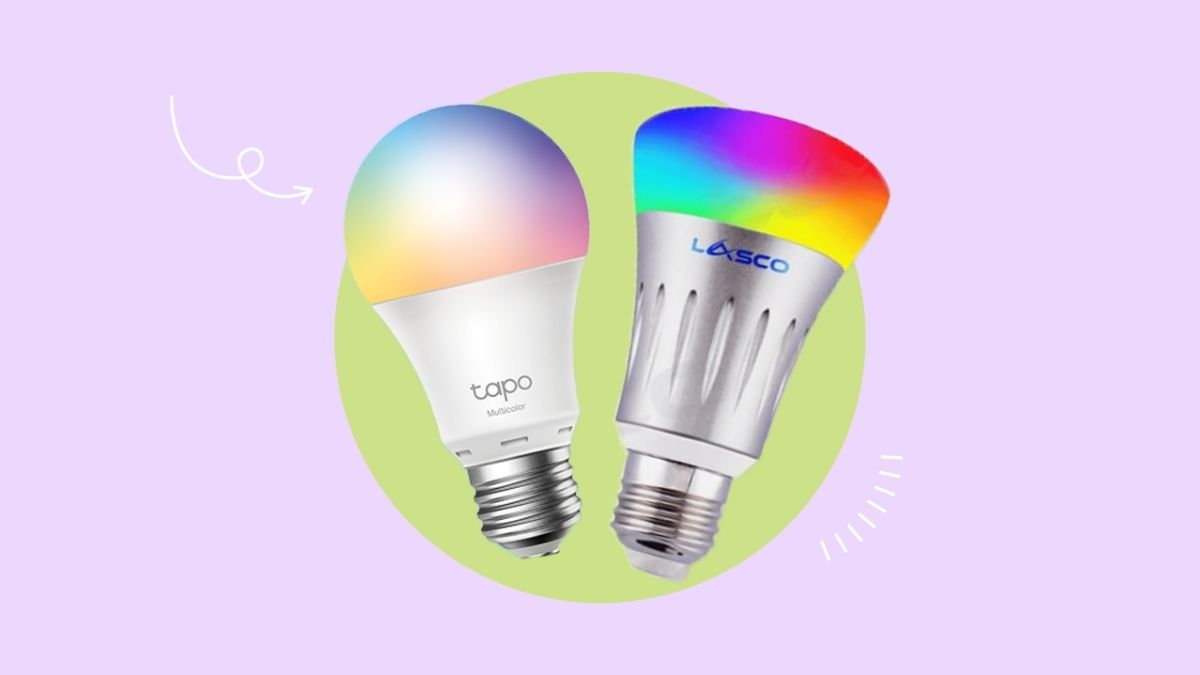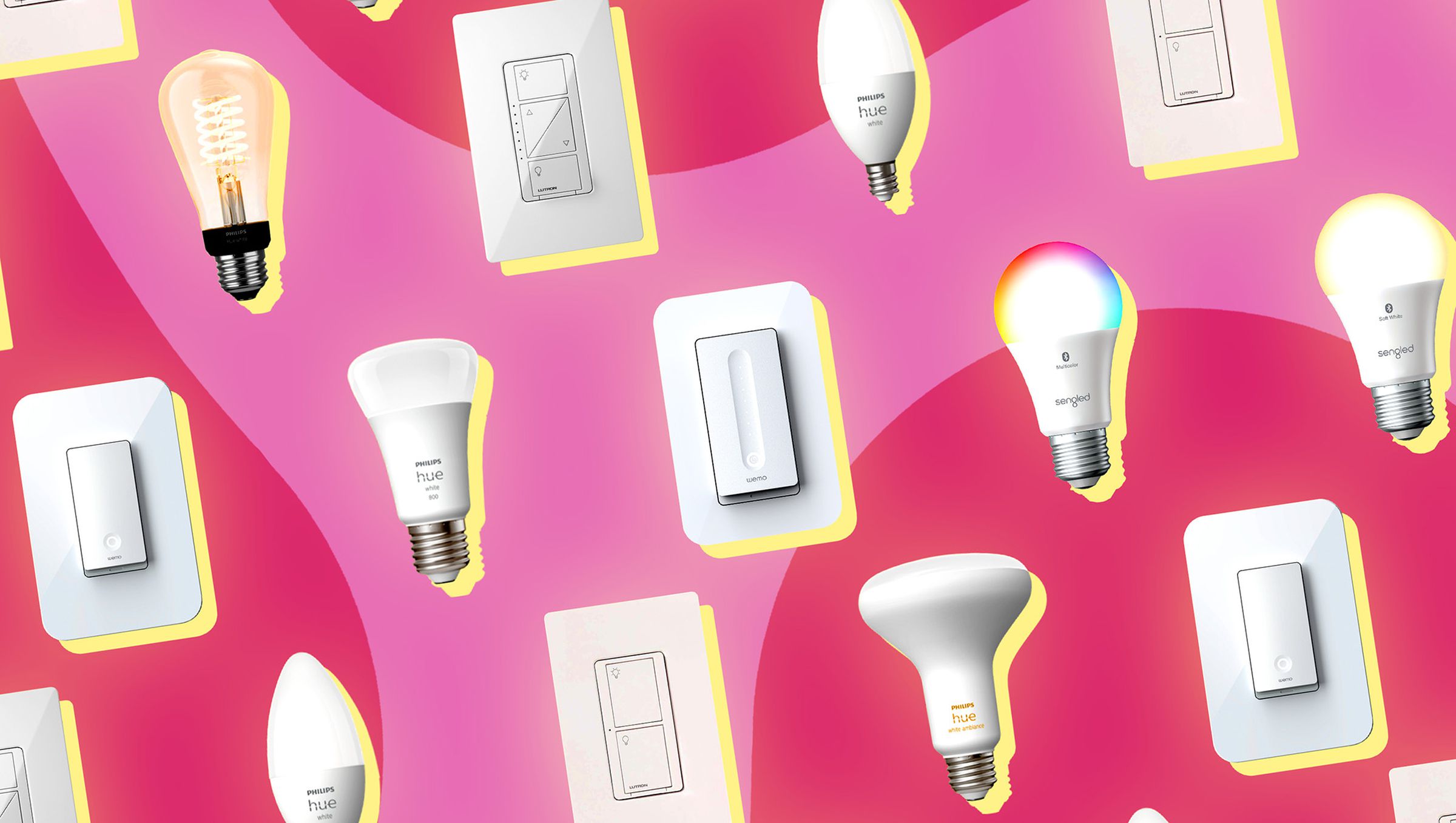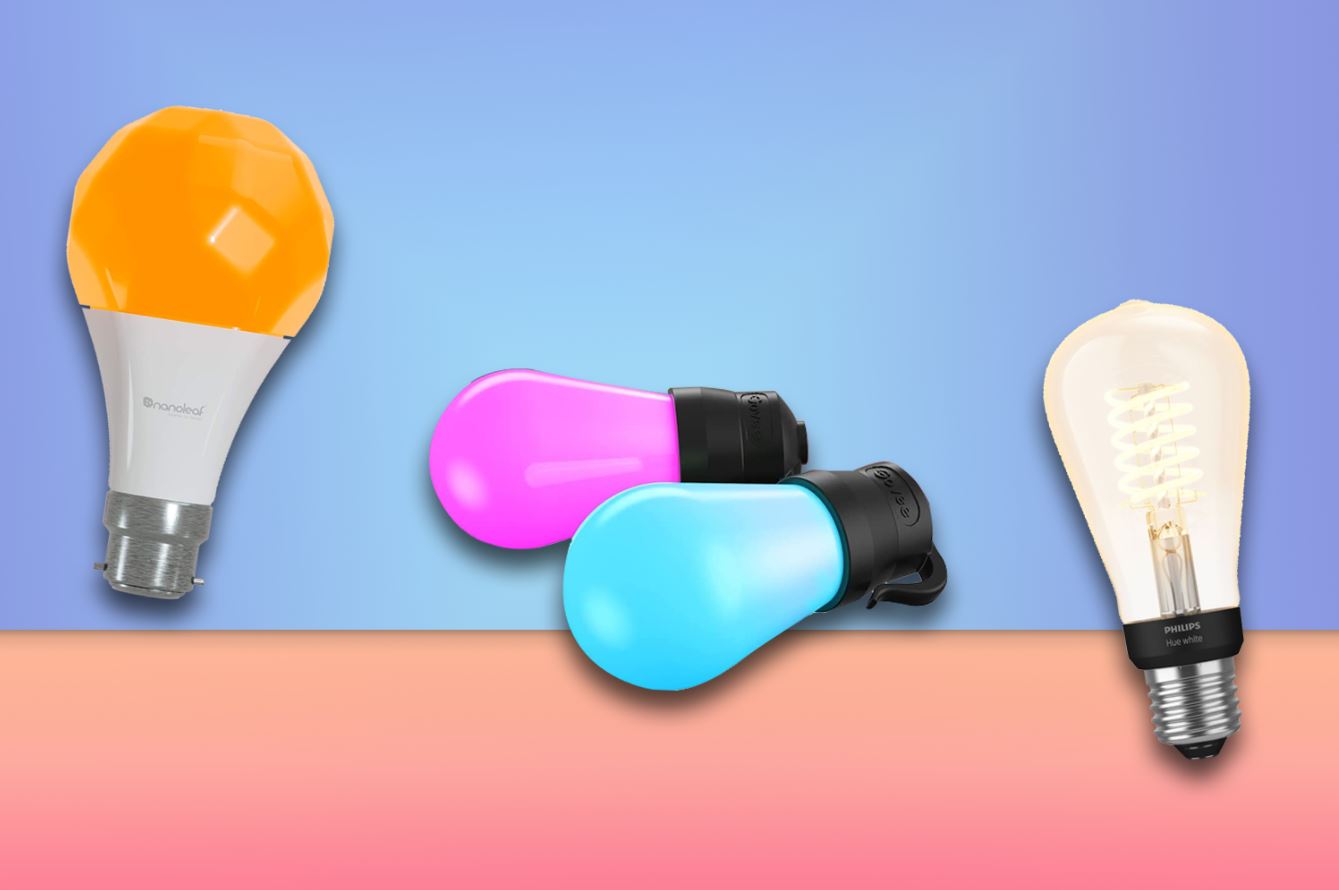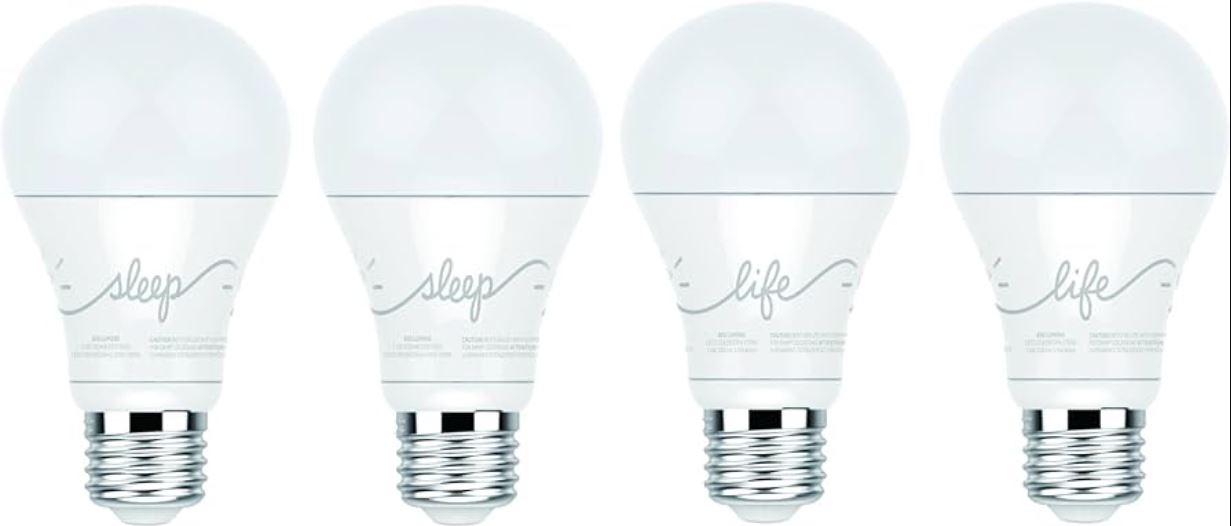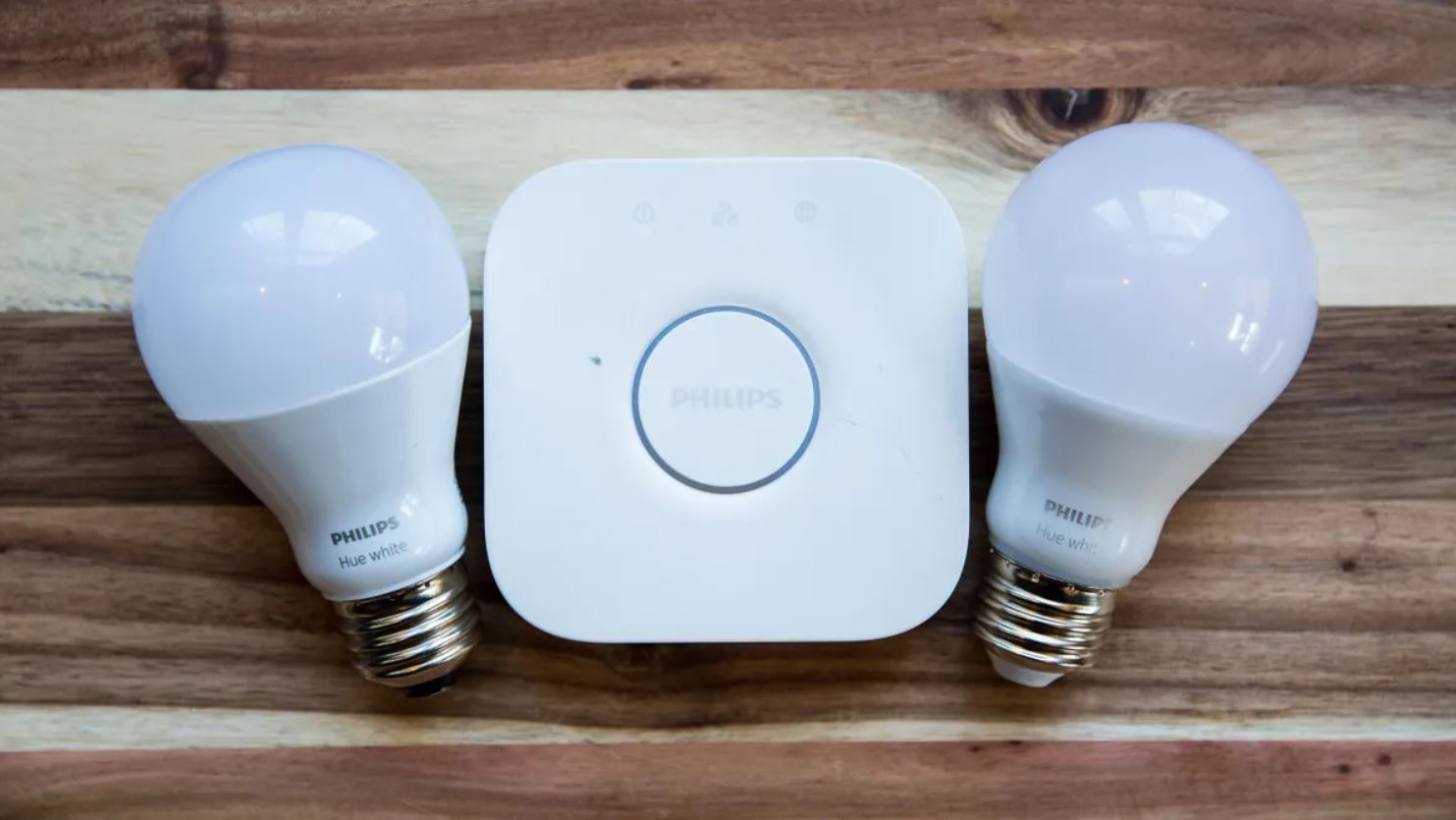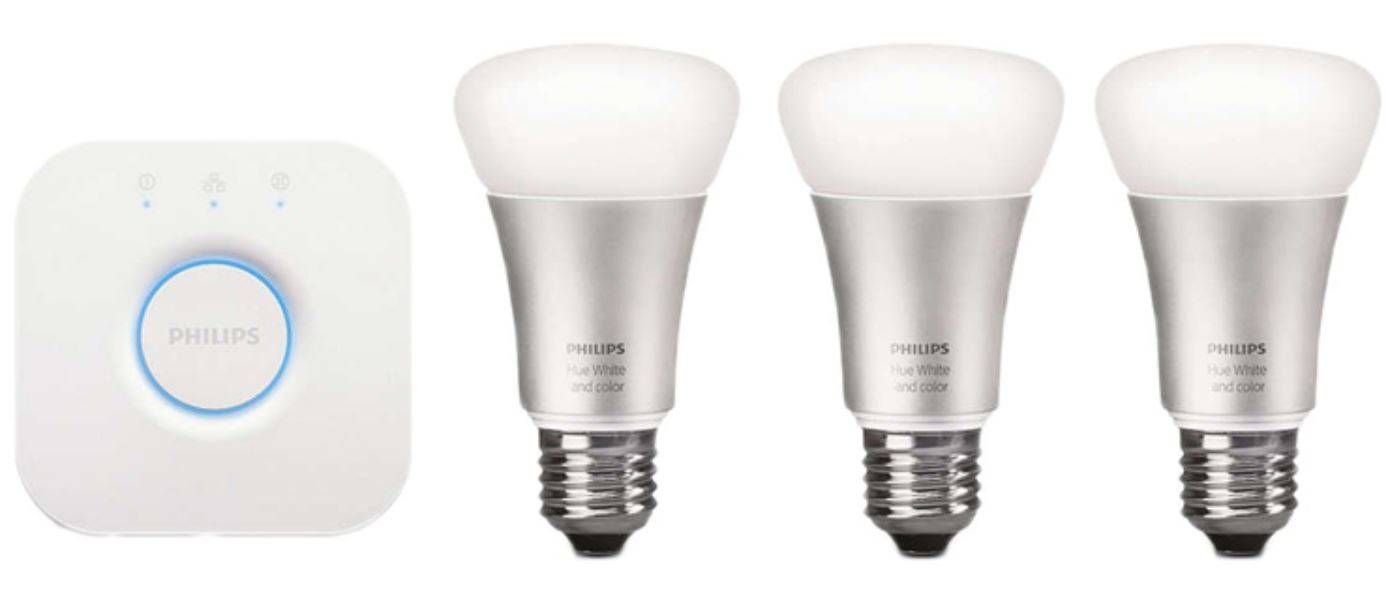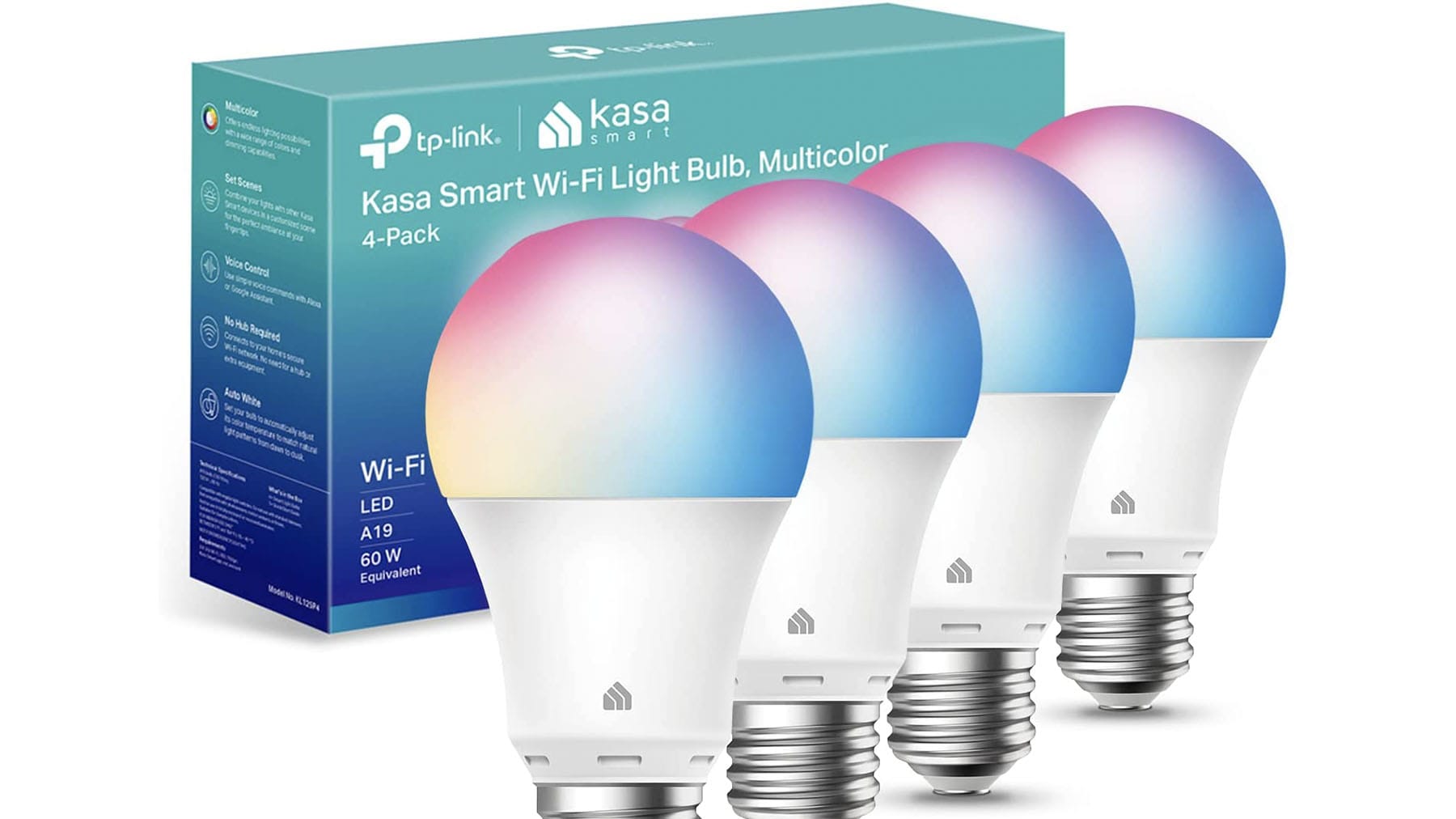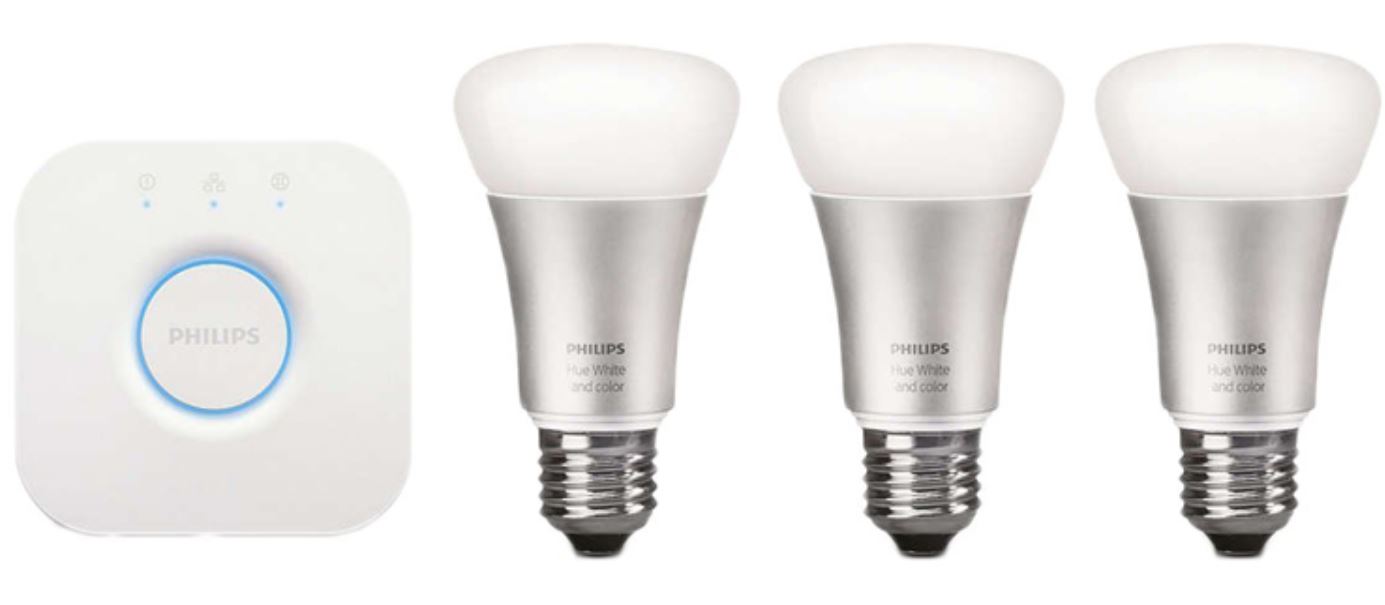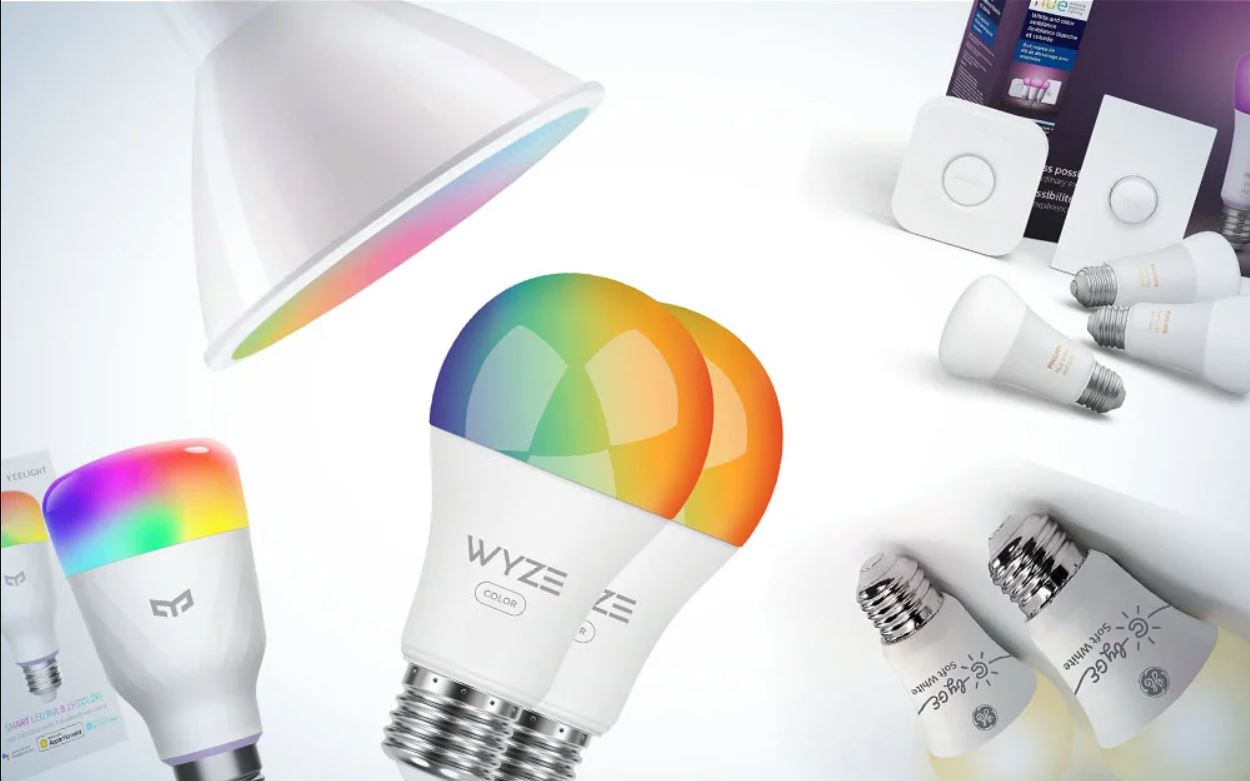Introduction
Welcome to the world of smart home technology, where even the humble light bulb can be transformed into a cutting-edge device. Smart light bulbs have become increasingly popular in recent years, offering a range of features and benefits that go far beyond simply illuminating a room.
Imagine being able to control your lights with a simple voice command, or being able to adjust their brightness and color to suit your mood or the occasion. With a smart light bulb, all of this is possible and more.
In this article, we will explore the world of smart light bulbs and discover what makes them such a valuable addition to any smart home setup. We will delve into their features, benefits, and how they can improve your everyday life.
Whether you’re a tech enthusiast or just someone looking to add some convenience and efficiency to your home, smart light bulbs offer a myriad of possibilities.
So, let’s dive in and unlock the potential of smart light bulbs and how they can transform the way you experience lighting in your home.
What is a Smart Light Bulb?
A smart light bulb, also known as a connected or Wi-Fi-enabled light bulb, is a type of light bulb that can be controlled wirelessly using a smartphone, voice commands, or via a smart home automation system. Unlike traditional light bulbs, smart light bulbs connect to your Wi-Fi network, allowing you to control them remotely and customize their settings.
Smart light bulbs come in various shapes and sizes, including standard A19 bulbs, floodlights, and even light strips. They are typically equipped with built-in LED technology, which offers energy efficiency and longevity compared to traditional incandescent bulbs.
What sets smart light bulbs apart is their ability to connect to a home network and be controlled through a dedicated app or integrated with other devices and systems. This connectivity opens up a multitude of possibilities for customization and automation.
Many smart light bulbs are compatible with popular voice assistant platforms such as Amazon Alexa, Google Assistant, and Apple HomeKit. This enables you to control the lights with simple voice commands, turning them on or off, adjusting brightness, and even changing colors without lifting a finger.
In addition to voice control, smart light bulbs can be programmed to follow preset schedules or timers. This means you can set your lights to automatically turn on or off at specific times, creating a sense of security or mimicking your presence even when you’re away from home.
With the advancements in technology and the growing popularity of smart home automation, smart light bulbs are becoming an essential component of a connected home. They offer convenience, energy efficiency, and the ability to personalize and create ambiance with just a few taps on your smartphone or a simple voice command.
Now that we understand what smart light bulbs are, let’s explore the benefits they provide and how they can enhance your everyday life.
Benefits of Using Smart Light Bulbs
Smart light bulbs offer a wide range of benefits that go beyond traditional lighting solutions. Let’s take a look at some of the key advantages of using smart light bulbs in your home:
1. Convenience and Control:
One of the primary benefits of smart light bulbs is the convenience they provide. With just a tap on your smartphone or a voice command, you can control your lights from anywhere in your home. Whether you want to turn them on or off, adjust brightness levels, or change colors, it can all be done with ease.
2. Energy Efficiency:
Smart light bulbs are designed with energy efficiency in mind. They utilize LED technology, which consumes significantly less energy compared to traditional incandescent bulbs. Additionally, you can set schedules and timers to ensure your lights are only on when needed, resulting in further energy savings.
3. Customization and Personalization:
Smart light bulbs offer a wide range of customization options. You can adjust color temperatures to create different moods or choose from a spectrum of colors to match your preferences or special occasions. Some smart light bulbs even sync with music or movies, providing an immersive lighting experience.
4. Security and Safety:
Smart light bulbs can enhance the security and safety of your home. You can program your lights to turn on and off at specific times, giving the illusion that someone is present when you’re away. Motion sensors can also be integrated, automatically turning on lights in response to movement, deterring potential intruders.
5. Integration with Smart Home Systems:
Smart light bulbs can be seamlessly integrated into a larger smart home ecosystem. They can be synchronized with other smart devices such as thermostats, door locks, and security systems, allowing for greater convenience and automation.
6. Improved Sleep and Well-being:
With the ability to adjust color temperatures, smart light bulbs can promote better sleep and overall well-being. You can set warmer, more relaxing tones in the evening to signal your body that it’s time to wind down, while brighter, cooler shades can help boost energy and focus during the day.
These are just a few of the many benefits that come with using smart light bulbs. They offer a high level of control, convenience, and energy efficiency, transforming the way you illuminate and interact with your home environment. Now, let’s explore some of the key features of smart light bulbs in more detail.
Features of Smart Light Bulbs
Smart light bulbs come equipped with a variety of features that set them apart from traditional light bulbs. Let’s explore some of the key features that make smart light bulbs a valuable addition to any smart home:
1. Wireless Connectivity:
Smart light bulbs connect to your home’s Wi-Fi network, allowing them to be controlled remotely. This wireless connectivity eliminates the need for physical switches or dimmers, as you can control the lights using a dedicated app on your smartphone or through voice commands with compatible smart assistants.
2. Voice Control:
Smart light bulbs integrate seamlessly with popular voice assistant platforms such as Amazon Alexa, Google Assistant, and Apple HomeKit. This enables you to control the lights using simple voice commands, providing a hands-free and convenient way to adjust the lighting in your home.
3. Dimming and Color Changing:
Smart light bulbs offer the ability to dim and even change colors, providing endless possibilities for creating the perfect ambiance in any room. You can adjust the brightness level to suit different activities or mood settings, from a bright, well-lit workspace to a relaxing, dimly lit bedroom.
4. Scheduling and Automation:
With smart light bulbs, you can set schedules and timers to automate your lighting. This means you can have your lights turn on and off at specific times, creating the illusion of occupancy when you’re away from home or ensuring a well-lit entryway when you arrive.
5. Grouping and Scenes:
Smart light bulbs allow you to group multiple bulbs together and control them simultaneously. You can create scenes that adjust the color, brightness, and even the timing of your lights to match different activities or moods, such as movie night, dinner party, or reading time.
6. Energy Monitoring:
Some smart light bulbs come with energy monitoring features, providing detailed information on energy usage. This allows you to track and identify areas where you can optimize energy consumption, leading to potential cost savings on your electricity bill.
7. Compatibility with Smart Home Systems:
Smart light bulbs are designed to integrate seamlessly with other smart home devices and systems. They can be connected to smart hubs or smart home platforms, allowing for centralized control and automation across multiple devices, such as thermostats, security systems, and more.
These features empower you to have full control over your lighting, personalize your space, and enhance your daily routines. With the ability to adjust brightness, color, and scheduling, smart light bulbs offer a level of flexibility and convenience that traditional light bulbs simply cannot match.
Now that we understand the features of smart light bulbs, let’s discover how voice control can take your smart lighting experience to the next level.
Voice Control with Smart Light Bulbs
One of the most exciting features of smart light bulbs is the ability to control them using your voice. Voice control provides a hands-free and effortless way to adjust your lighting, adding convenience and even a touch of futuristic charm to your home. Let’s explore how voice control works with smart light bulbs and the benefits it brings:
1. Compatibility with Voice Assistant Platforms:
Smart light bulbs are designed to integrate seamlessly with popular voice assistant platforms such as Amazon Alexa, Google Assistant, and Apple HomeKit. This means you can control your lights using simple voice commands, making the process effortless and convenient.
2. Turning the Lights On and Off:
With voice control, you can easily turn your lights on or off without the need for physical switches. Whether you’re already comfortable in bed or entering a room with your hands full, a simple voice command can illuminate or darken the space instantly.
3. Adjusting Brightness Levels:
You can use voice commands to adjust the brightness levels of your smart light bulbs. Whether you want a well-lit space for work or a softer, more relaxing atmosphere, a quick voice command can set the perfect lighting level for any occasion.
4. Changing Colors:
If you have color-changing smart light bulbs, voice control allows you to change the colors effortlessly. Simply say the desired color or use specific voice commands, and your lights will transform accordingly. This feature adds a fun and dynamic element to your home’s lighting setup.
5. Setting Scenes and Modes:
Voice control enables you to set scenes or modes for your smart light bulbs. You can group multiple bulbs together and create custom settings for different activities or moods. For example, you can create a “movie night” scene that dims the lights and sets them to a deep blue color for a cinematic experience.
6. Hands-Free Control:
One of the key benefits of voice control is its hands-free nature. Whether your hands are occupied with cooking, cleaning, or simply relaxing on the couch, you can easily adjust your lights with just your voice. This adds an extra layer of convenience and ease to your daily routines.
7. Integration with Other Devices:
Smart light bulbs with voice control can be integrated with other smart devices in your home. For instance, you can use voice commands to simultaneously adjust your lights and adjust the temperature on your smart thermostat or lock your smart door locks, creating a seamless and connected home experience.
Voice control simplifies the process of controlling your smart light bulbs and adds a new level of convenience and accessibility. Whether you’re looking to create the right ambiance for a party, a cozy evening at home, or simply want to impress your guests with a hands-free lighting experience, voice control with smart light bulbs can enhance your smart home setup.
Now that we’ve explored the benefits of voice control, let’s delve into how smart light bulbs allow you to set schedules and timers for automated lighting routines.
Setting Schedules and Timers
Smart light bulbs offer the convenience of setting schedules and timers to automate your lighting routines. With the ability to program your lights to turn on and off at specific times, you can enjoy a hassle-free lighting experience that aligns with your lifestyle. Let’s explore the benefits and possibilities of setting schedules and timers with smart light bulbs:
1. Mimic Occupancy:
One of the key advantages of setting schedules and timers is the ability to mimic occupancy when you’re away from home. By programming your lights to turn on and off at regular intervals, you create the illusion that someone is home, enhancing security and deterring potential intruders.
2. Energy Efficiency:
Setting schedules and timers can significantly improve energy efficiency. You can ensure that your lights are only on when needed, reducing unnecessary energy consumption. This feature is especially useful for outdoor lighting or in rooms that are often unoccupied, such as bathrooms or storage areas.
3. Wake-Up and Bedtime Routines:
You can set schedules and timers to align with your wake-up and bedtime routines. For example, you can program your lights to gradually brighten in the morning, simulating a natural sunrise and helping you wake up more gently. In the evening, you can dim the lights to create a relaxing atmosphere, signaling your body that it’s time to wind down for sleep.
4. Enhanced Convenience:
With schedules and timers, you can enjoy enhanced convenience in your daily life. For instance, you can program your lights to turn on automatically as you arrive home, creating a welcoming environment before you even step through the door. Similarly, you can schedule your lights to turn off at a certain time when you typically go to bed, saving you the trouble of manually turning them off.
5. Personalized Lighting Routines:
Setting schedules and timers allows you to create personalized lighting routines tailored to your preferences and daily activities. You can have your lights automatically adjust throughout the day, providing optimal lighting for different tasks and moods. Whether it’s bright lighting for focused work or subdued lighting for relaxation in the evening, your smart light bulbs can adapt to your needs automatically.
6. Vacation Mode:
When you’re on vacation, setting schedules and timers is an excellent way to give your home a lived-in appearance. You can program your lights to turn on and off at specific times, creating the illusion that someone is home even when you’re away. This feature adds an extra layer of security and peace of mind.
Setting schedules and timers with smart light bulbs allows you to enjoy a seamless and effortless lighting experience. It not only enhances convenience and energy efficiency but also adds a layer of security and personalization to your home. With the flexibility and control offered by smart light bulbs, you can create a lighting routine that perfectly suits your lifestyle.
Next, let’s explore how smart light bulbs enable you to adjust color and brightness to create the perfect ambiance for any occasion.
Adjusting Color and Brightness
Smart light bulbs offer the ability to adjust both color and brightness, allowing you to create the perfect ambiance for any occasion. Whether you want a bright and energizing atmosphere or a warm and cozy glow, smart light bulbs give you a wide range of options to suit your preferences. Let’s explore the benefits and possibilities of adjusting color and brightness with smart light bulbs:
1. Personalized Lighting:
Smart light bulbs allow you to personalize your lighting based on your mood, activity, or preference. You can choose from a spectrum of colors to create a vibrant and dynamic environment or opt for warm and calming hues to promote relaxation. With the ability to adjust the color and brightness, you can set the perfect atmosphere for any occasion.
2. Create Different Moods:
By adjusting the color and brightness, you can instantly transform the mood and ambiance of a room. Brighter and cooler tones are ideal for focused tasks or a lively gathering, while softer and warmer hues create a cozy and inviting atmosphere for relaxation or intimate gatherings.
3. Enhance Home Decor:
Smart light bulbs can add a touch of elegance and style to your home decor. You can match the lighting color and intensity to complement your space and highlight specific features or decor elements. Whether it’s illuminating artwork or accentuating architectural details, adjusting color and brightness helps set the right aesthetic tone.
4. Party and Entertainment Lighting:
Hosting a party or special event? Smart light bulbs can take your entertainment experience to the next level. Sync your lights with music or set dynamic color-changing effects to create a lively and immersive atmosphere that complements the music or enhances the overall ambiance of your gathering.
5. Personalized Sleep Environment:
Adjusting color and brightness can impact your sleep environment. In the evening, dimming the lights and shifting to warm tones can help signal to your body that it’s time to wind down and prepare for sleep. This can promote a more restful and rejuvenating sleep experience.
6. Energy Efficiency:
By controlling the brightness levels of your smart light bulbs, you can optimize energy consumption. Lowering the brightness when it’s not needed or dimming the lights during times of relaxation can contribute to saving energy and reducing your overall electric bill.
The ability to adjust color and brightness with smart light bulbs empowers you to create personalized and immersive lighting experiences. With a few taps on your smartphone or simple voice commands, you can transform the atmosphere of your home to suit your mood and activities. Whether you’re looking for an energizing environment, a cozy ambiance, or a sophisticated lighting scheme, smart light bulbs give you the flexibility to achieve the perfect lighting setting.
Next, let’s explore how smart light bulbs offer energy efficiency and potential cost savings.
Energy Efficiency and Cost Savings
Smart light bulbs not only provide convenience and versatility in lighting control but also contribute to energy efficiency and potential cost savings. With advanced LED technology and customizable features, smart light bulbs offer several benefits in terms of energy conservation and reduced electricity bills. Let’s explore the advantages of energy efficiency and the potential cost savings with smart light bulbs:
1. LED Technology:
Smart light bulbs are typically equipped with LED technology, which is known for its energy efficiency. LED bulbs consume significantly less energy compared to traditional incandescent bulbs, helping to reduce overall energy consumption in your home.
2. Customizable Settings and Automation:
Smart light bulbs allow you to customize your lighting settings and automate their operation. By setting schedules and timers, you can ensure that the lights are only on when needed, avoiding unnecessary energy wastage. This level of control helps optimize energy use and reduce electricity bills.
3. Dimming and Brightness Control:
Smart light bulbs offer the ability to adjust brightness levels, allowing you to use only the necessary amount of light for any given situation. Dimming the lights or using lower brightness settings not only creates a pleasant ambiance but also saves energy by consuming less electricity.
4. Motion Sensors and Occupancy Detection:
Some smart light bulbs come with integrated motion sensors or occupancy detection capabilities. These features automatically turn on the lights when motion is detected in a specific area and turn them off when no motion is detected, ensuring that lights are not left on when they are not needed.
5. Energy Monitoring and Insights:
Certain smart light bulbs offer energy monitoring features that provide insights into energy usage. With this information, you can track and identify areas where energy consumption can be optimized, allowing you to make informed decisions and further reduce your energy footprint.
6. Extended Lifespan:
LED technology used in smart light bulbs has a longer lifespan compared to traditional bulbs. This reduces the frequency of bulb replacements, saving both money and resources in the long run.
7. Cost Savings:
While the upfront cost of smart light bulbs may be higher than traditional bulbs, the energy efficiency and longevity of smart bulbs can result in long-term cost savings. The reduced energy consumption and extended lifespan contribute to a reduction in your overall electricity bills and the need for frequent bulb replacements.
By investing in smart light bulbs and harnessing their energy-saving capabilities, you can experience significant cost savings over time while reducing your impact on the environment. The combination of LED technology, customizable features, and the ability to monitor and optimize energy consumption makes smart light bulbs a smart choice for those looking to reduce both their energy bills and carbon footprint.
Now that we’ve explored the energy efficiency and cost-saving benefits of smart light bulbs, let’s see how they integrate into larger smart home systems and ecosystems.
Compatibility with Smart Home Systems
Smart light bulbs are designed to seamlessly integrate into larger smart home systems, allowing for centralized control and automation. They can connect and communicate with other smart devices, creating a cohesive and interconnected network that enhances the functionality and convenience of your smart home. Let’s explore the benefits and possibilities of smart light bulb compatibility with smart home systems:
1. Centralized Control:
By integrating smart light bulbs into a smart home system, you can control all your smart devices from a central hub or app. This consolidated control enables you to manage not only your lights but also other connected devices such as thermostats, door locks, security cameras, and more.
2. Automation and Scenes:
Smart light bulbs, when combined with other smart devices, can be programmed to create customized automation and scenes. For example, you can set a “bedtime” scene that turns off all the lights, adjusts the thermostat, and locks the doors with a single command or tap on your smartphone.
3. Voice Control Integration:
When connected to a smart home system, smart light bulbs can be controlled using voice commands through popular voice assistants such as Amazon Alexa, Google Assistant, or Apple Siri. This integration allows for seamless and convenient control of your lights and other smart devices using simple voice commands.
4. Increased Efficiency and Energy Savings:
Connecting smart light bulbs to a smart home system enables increased efficiency and energy savings. For instance, you can coordinate the lighting throughout your home based on occupancy or daylight sensing, ensuring that lights are only on when needed and dimming or turning off when a room or area is unoccupied.
5. Enhanced Security:
Integrating your smart light bulbs with a comprehensive smart home system enhances security features. For example, you can create lighting scenarios that simulate occupancy when you’re away, helping to deter potential intruders. Lights can automatically turn on when motion is detected or sync with security cameras to provide additional illumination for monitoring purposes.
6. Remote Access and Monitoring:
A smart home system allows you to remotely access and monitor your smart light bulbs from anywhere using your smartphone or tablet. You can turn the lights on or off, adjust brightness and color, and even receive notifications based on specific events or triggers, providing you with peace of mind and control even when you’re not at home.
The compatibility of smart light bulbs with smart home systems offers a seamless and integrated experience. By integrating your lights with other smart devices and automation, you can create a truly smart and interconnected home environment that simplifies your daily routines, enhances security, and contributes to a more comfortable and efficient living space.
Now that we’ve explored the compatibility of smart light bulbs with smart home systems, let’s conclude by summarizing the benefits and possibilities they offer to enhance your overall lighting experience and smart home setup.
Conclusion
Smart light bulbs have revolutionized the way we illuminate our homes. With their advanced features, such as wireless connectivity, voice control, and customizable settings, smart light bulbs offer convenience, energy efficiency, and the ability to create personalized lighting experiences. Whether you’re looking to set the perfect ambiance for a dinner party, create a cozy environment for relaxation, or enhance your home security, smart light bulbs have got you covered.
From the convenience of controlling your lights with simple voice commands to the energy savings achieved through dimming and scheduling, smart light bulbs offer a wide range of benefits. They allow you to tailor your lighting to match your mood, automate your lighting routines, and integrate seamlessly with other smart devices in your home.
Not only do smart light bulbs provide a convenient and efficient lighting solution, but they also contribute to long-term cost savings. Their energy-efficient LED technology, combined with features like scheduling and motion detection, helps reduce energy consumption and lower electricity bills.
Additionally, the compatibility of smart light bulbs with smart home systems enhances their functionality and integration within a larger ecosystem. By connecting your smart light bulbs to a smarter home network, you can centralize control, automate routines, and create a more secure and efficient living space.
In conclusion, smart light bulbs offer a plethora of benefits that enhance the way we light our homes. From the convenience of wireless control and voice commands to the infinite possibilities of adjusting color and brightness, smart light bulbs empower you to create the ideal lighting environment for every room and occasion. With their energy efficiency, customization options, and compatibility with smart home systems, smart light bulbs truly elevate our lighting experience and pave the way for a more connected and intelligent home.







